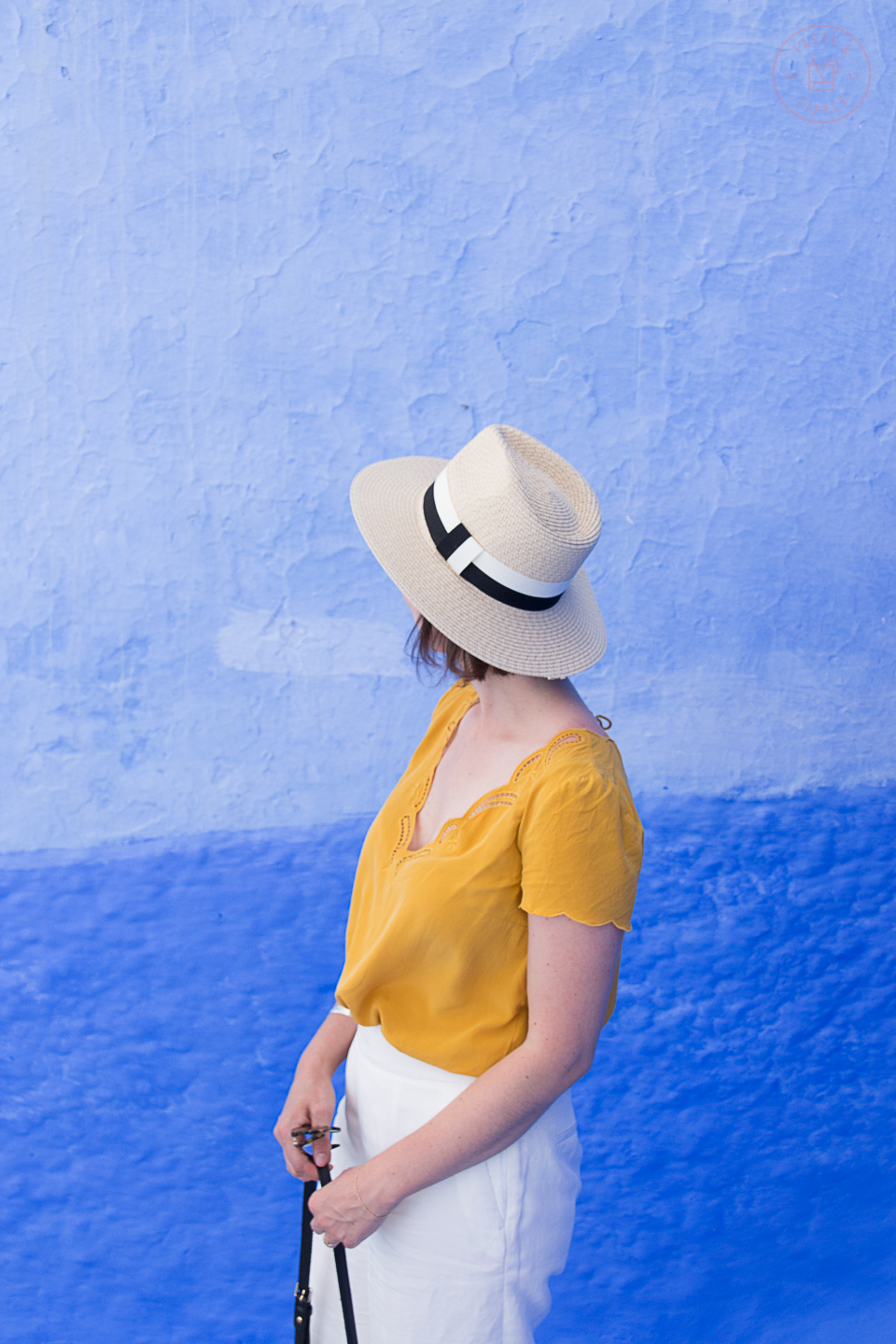
I made the 8-hour journey from Marrakech to Fes by train. I paid to upgrade to a first class ticket bringing the cost to only 310 Moroccan Dirhams – about $42 CAD. There were six people per compartment and it was remarkably comfortable.
While I tried my best to avoid using the bathroom on the train altogether, after the American beside me described it as “grody”, I forgot my pee bag at home. To my relief, the bathroom on the train did in fact have a toilet. The only surprise was that it was completely without plumbing as it was mounted directly to a hole in the floor – giving a whole new meaning to “freshen up.”
I’m staying at the Riad Mazar in Fes and was immediately dazzled by the craftsmanship throughout. Fes is touted as the home of handicrafts and my hotel is a testament to that legacy.

Intricate mosaics, phenomenal plaster detailing, ceiling panels carved of cedar and painstakingly painted by hand, everywhere you turn you’re greeted by another example of the careful thought and consideration that makes Moroccan design so unique.
On my first full day in Fes, I wandered haplessly through the labyrinth of the Medina that makes the souks of Marrakech look like child’s play. The heart of Fes is a complicated tapestry of tiny alleyways with tangential offshoots. Luckily, if you follow your ears, you’ll be led back to the main thoroughfare with the boisterous sounds of bartering at the shops along Talaa Kebeera.

I managed to find my way, with some unwanted help from a “shopkeeper” to one of the town’s famous tanneries. Fes is renowned for the quality of its leather and has three tanneries. National Geographic described working in the tanneries in Fes as one of the most dangerous (and disgusting) jobs in the world. I’ll let them do the explaining on that one. When you get close to the tanneries you’ll know it. The stench emanating from these places is unforgettable. The leather shops surrounding the tanneries have balconies offering unfettered views of the process. You’ll be able to stay just long enough to get a photo and then you’ll want to retreat back into the medina before the putrid smell singes off your nose hair.
After the tanneries, I made my way just down the road to the Nejjarine Museum of Wooden Arts and Crafts. This place is a must-see. All variety of wooden tools from past centuries fill the rooms of this three-floor museum – from baby cribs to instruments to doors and shelves. The level of detail in all of these works is truly remarkable.

At the recommendation of my Lonely Planet guidebook, I had a late lunch at Café Clock which is known for its cultural programming that makes it a destination for locals, tourists and ex-pats. In spite of the high praise it earned from Lonely Planet, I thought it was pretty average.
On my first visit on the evening of my arrival, I ordered the herbed chicken sandwich with preserved lemon mayo. The chicken was tender but the bread was dry and dense and the preserved lemon mayo was completely overwhelmingly with its astringent quality. On my second visit, I ordered the falafel, hummus and tabbouleh. It was just okay – the falafel was a bit dry and the other components were uninteresting. The mint lemonade and ginger lemonade were both delicious. On both occasions, the service was pretty slow and inattentive. That being said, I’m sure having been featured in one of the most popular guidebooks will have them printing money for years to come.

I feel like Fes has a bit more charm than Marrakech – it feels slightly more relaxed and has more character.
The next day, I made the day trip to Chefchaouen, a small town in the Northwest of Morocco situated in the Rif Mountains. The three hour drive is a beautiful pastoral landscape of rolling hills and olive groves. We passed many sheep, cattle and mules on our journey.

Chefchaouen is a popular tourist destination as it’s a short jaunt from Tangier or Fes and just so happens to be painted entirely blue. There are a couple of theories as to why the town is blue. The first is that it keeps the mosquitoes at bay. The second is that the Jews painted in blue when they took refuge there from the Nazis. In any case, it’s meant to symbolize the sky and heaven, and serve as a reminder to lead a spiritual life.

It is beautiful. Around every corner there was a new and beautiful little vignette that I wanted to capture. I could post an entire album of shades of blue from Chefchaouen. I met up with my friends Dianne and Etienne in the town and we meandered through the corkscrew passageways of the Medina at a leisurely pace.
Unlike Marrakech and Fes, where French is spoken, Spanish is the second language to Arabic in Chefchaouen. The city was part of Spanish Morocco before independence, which explains the shift in linguistics.

The goods on sale in Chefchaouen were a bit different from what I’d seen elsewhere. There was a different selection of woven blankets, more Berber robes and unique hats with pom poms.
I’m so tempted to buy one of the many gorgeous rugs I’ve seen here but am restrained by the size of my luggage.

If you’re planning to visit Morocco – I would definitely recommend you make the detour to Chefchaouen. It is beautiful sapphire of a city that will leave you feeling restored after the frenetic pace of the souks in the larger cities.

